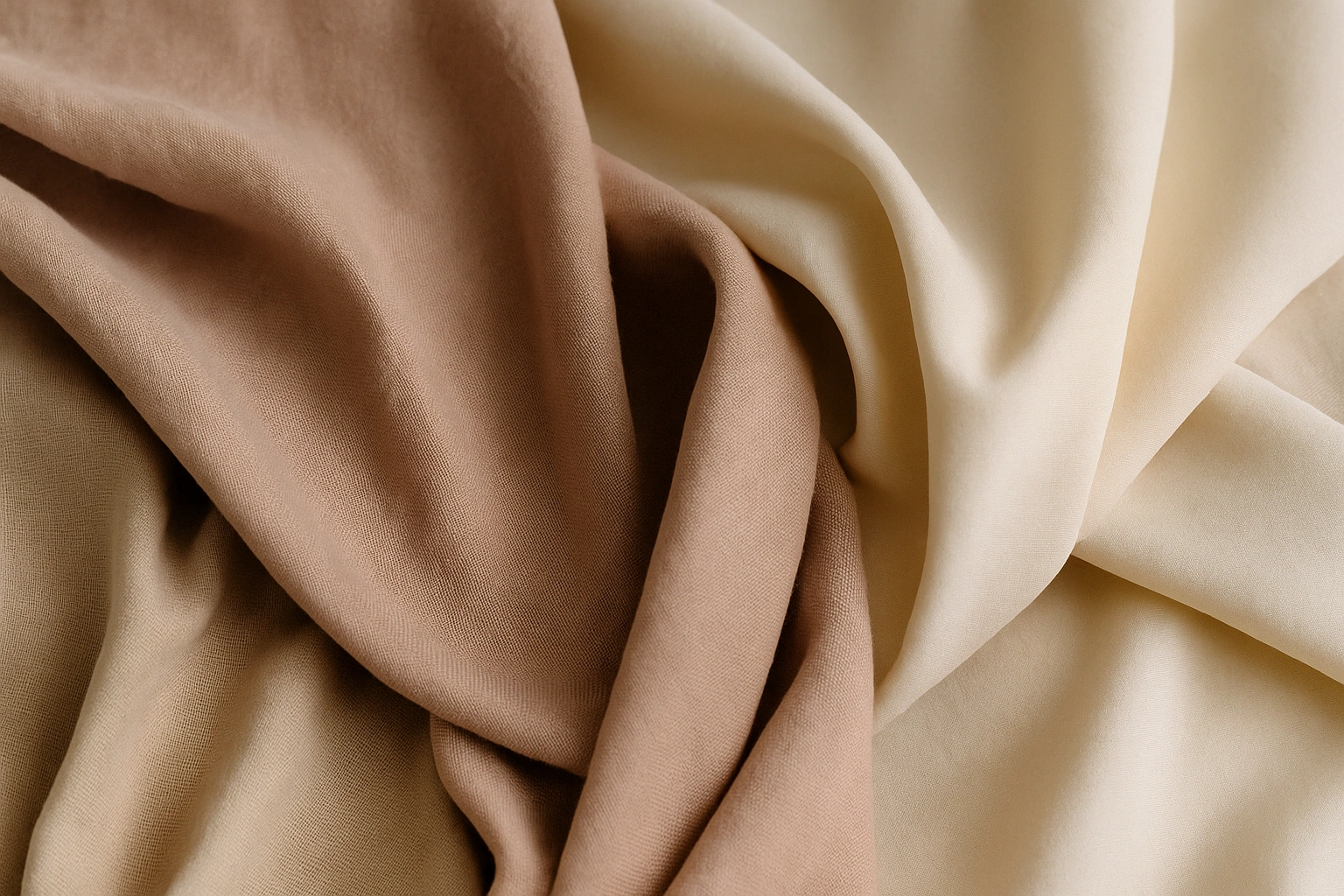Sensory fashion is the language of the body: the touch of fabric, the color near your face, and the shape of your silhouette can calm the nervous system, enhance focus, and reduce anxiety.
When Touch Becomes Therapy
The skin is the largest sensory organ. Every contact of fabric with it sends a signal to the brain. Soft and natural fibers tend to activate the parasympathetic system (the recovery mode), while coarse synthetic surfaces increase microtension and can keep the body in a “fight-or-flight” state.
- Silk, cashmere, soft wool help lower heart rate and create a feeling of safety.
- Cotton, linen, viscose provide stability and grounding thanks to breathability and natural elasticity.
- Rough synthetics and tight weaves can provoke micro-stress that builds up throughout the day.
Note: Gentle tactile stimulation is associated with higher oxytocin levels and lower stress response; the right fabric surface works as everyday sensory therapy.
Union Beauty Tips
- On stressful days, wear natural fibers close to your body (T-shirt, top, underwear) — they create a soothing background for the nervous system.
- If you lack energy, add a bit of texture (denim, raw linen) — a soft sensory “wake-up” for your body.
- Keep a “fabric of calm” nearby — a scarf or cardigan that feels pleasant to touch and can wrap you in comfort anywhere.
Tactile Memory
The brain forms a “neural map of touch”: textures associated with warmth and safety (a childhood blanket, a favorite sweater) leave a positive imprint. Sensory fashion is not about trends — it’s about recreating individual safety signals through materials.
In Japanese practice iyashi fashion (“healing fashion”), the focus is on comfort, natural fibers, and a quiet, non-aggressive silhouette.
Tips
- Do a “sensory test”: touch different fabrics with your eyes closed and note where your body relaxes.
- Create a recovery capsule of 3–4 pieces that bring you physical calm. Use it after stressful events.
- Avoid “trigger textures” (itchy or slippery) if they cause irritability or shallow breathing.
Color and Neurochemistry
Colors are waves the brain translates into hormonal signals. Warm hues increase stability, cool tones lower sympathetic tone, and neutrals “clear the field” of perception. Bright red and fuchsia boost dopamine (energy, drive) but can tire the mind if overused.
- Warm beige and terracotta — support serotonin levels and create a soft sense of grounding.
- Blue and green — activate the parasympathetic system: slower pulse, easier breathing.
- White and pastel — provide a neutral base for concentration and “mental reset.”
- Bold accents — a controlled spark of motivation.
Tips
- For workdays, keep a neutral base (white, sand, pastel) and add one energetic accent — a scarf, bag, or earrings.
- In the evening, shift to muted tones to help your nervous system wind down.
- Notice the color near your face: reflected light changes the warmth of your skin tone and your mood.
Silhouette and Breathing
Fit affects the diaphragm, depth of breath, and anxiety level. Tight belts, high collars, or excessive compression increase sympathetic activation. Loose, flowing silhouettes allow the body to move naturally and support the recovery mode.
The “embodied calm” effect: when the body has space, the brain receives a signal of safety — facial muscles relax, and the gaze softens.
Tips
- To reduce tension quickly, loosen restrictive elements: belt, cuffs, collar.
- Keep a “soft silhouette” piece in your wardrobe for overload days — a loose dress or shirt that lets you breathe deeply.
- Before important meetings, avoid overly rigid forms — choose a structured yet flexible cut.
Sensory Wardrobe Palette
Organize your clothes by time of day — a simple system to support the nervous system effortlessly.
- Morning — activation: light structured fabrics (linen, denim, cotton) for tone and focus.
- Day — maintenance: breathable fibers (silk, Tencel, knitwear) for stable body temperature.
- Evening — relaxation: viscose, cashmere, flannel — “hug-like” fabrics preparing for sleep.
Union Beauty Advice
- Create a “calm capsule” (3–4 pieces) for periods of stress.
- Prepare a “focus capsule” for high-concentration days (structured yet soft mid-weight fabrics).
Fashion as the Language of the Nervous System
Style is not only a way to show yourself to the world; it’s how you communicate with your body. Clothes that don’t scratch, squeeze, or overheat are a tool for regulating the nervous system. When the body feels safe, attractiveness follows naturally.
Tips
- While trying on clothes, watch your breathing: if it becomes shallow — the item isn’t yours, even if it looks perfect.
- Evaluate three points: touch, temperature, freedom. An item passes the test if after 10 minutes you still want to wear it.
Unexpected Discoveries
- Micro-encapsulated aromas in fabrics (aromatextiles) are already used in healthcare spaces to reduce anxiety — neutral, light scents provide background sensory support.
- Merino wool naturally regulates temperature and has antimicrobial properties — suitable not only for sportswear but for daily “quiet base” outfits.
- Tactile priming: soft textures enhance mindfulness practices and improve perceived calm.
Did You Know?
- People touch their clothes hundreds of times a day — most touches are unconscious but affect overall tone.
- The color near your face changes the reflected light tone of the skin and influences how others perceive your health and mood.
- The body reacts to a change in texture faster than to smell — through a dense network of tactile receptors.
Fashion is about how we feel. When clothing supports the nervous system, it creates a quality that no makeup can imitate: inner calm visible in your eyes and posture. Choose clothes not for impression but for harmony — and style will respond in kind.

